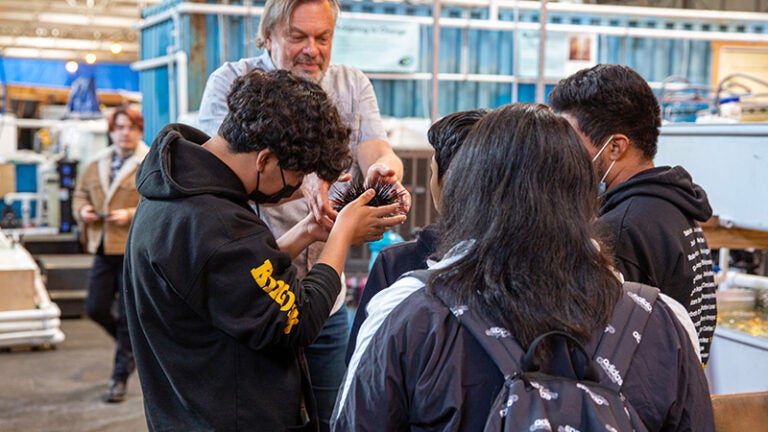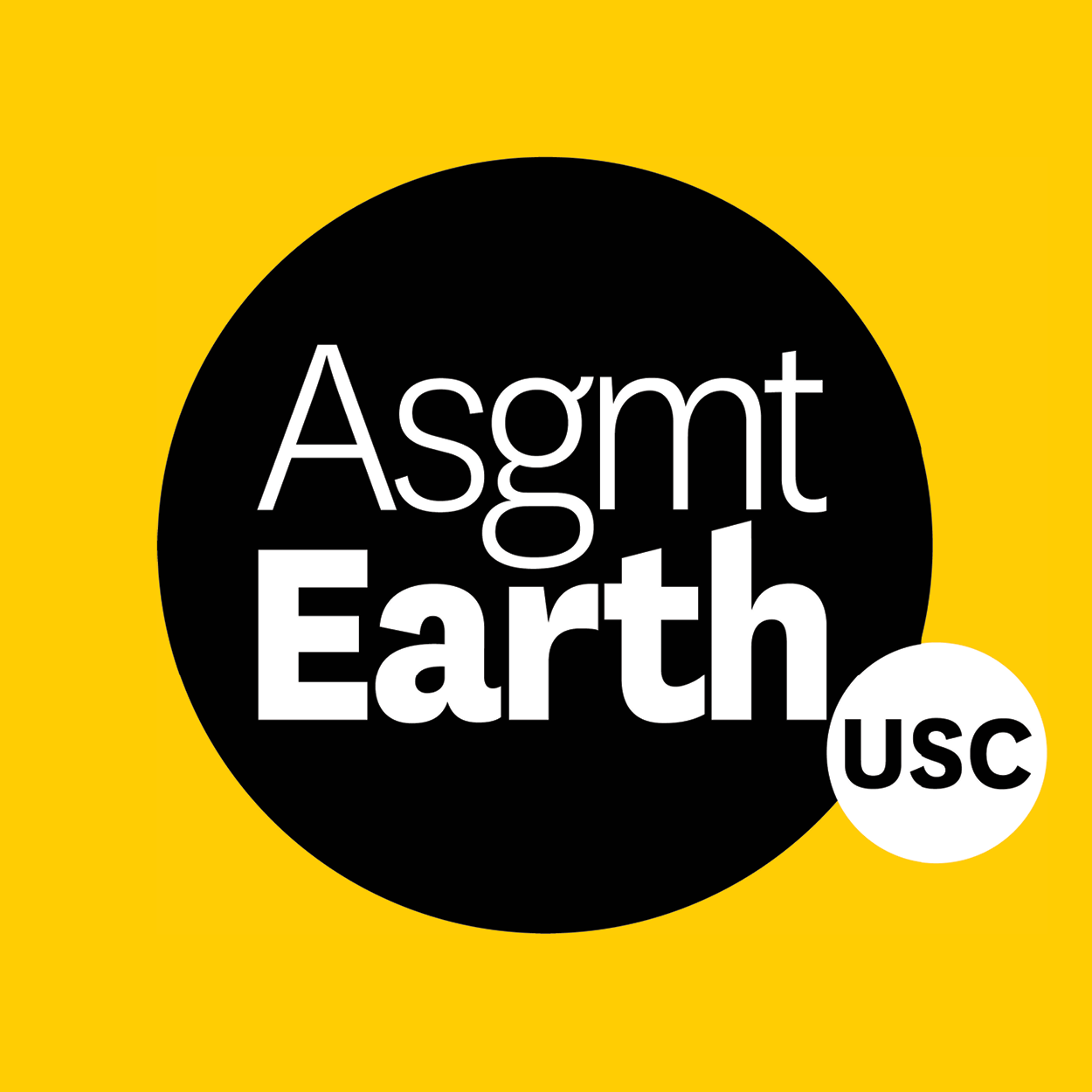
USC Aquaculture lab wows South Los Angeles high school students
Students from King/Drew Magnet High School of Medicine and Science in South Los Angeles recently gained firsthand knowledge of aquaculture and the “blue economy” in a state-of-the-art USC lab.
What happened: 45 King/Drew High School students visited the Nuzhdin Aquaculture Lab — a 6,000-square-foot facility in nearby San Pedro — on Feb. 9.
- Sergey Nuzhdin, professor of biological sciences at the USC Dornsife College of Letters, Arts and Sciences, heads the lab.
- Nuzhdin and the nonprofit AltaSea, where the lab resides, hosted the students.
Why it matters: Nuzhdin says visiting his lab provides high school and community college students a valuable opportunity to get an up-close view and hands-on experience of research and experiments in aquaculture.
- “The blue economy means jobs for these students. It’s important to expose them to biology and ensure they see the potential of a career in this field.”
- The blue economy centers on using ocean resources for economic growth and job creation by producing biofuels, sustainable food sources and biotechnology products.
- Aquaculture — farming of aquatic organisms such as shellfish and seaweed — is a significant component of the blue economy.
Further: “The blue economy is a way of changing how we look at using resources and shifting into using the ocean in a more beneficial way,” said Justin Gaffney, PhD candidate in marine and environmental biology at USC Dornsife.
Scott Applebaum, associate professor (teaching) of environmental studies at USC Dornsife, emphasized the importance of the hands-on learning experience students get when visiting the lab.
- “It’s important for students to put their hands in the tanks, learn how to do advanced genomics, learn how to do physiology, and how to work with producers,” he said.
- Alta Sea’s Education Program Manager Allan Hill explained, “If we want to achieve some of the climate goals by 2030, we need to educate high school students about what we’re doing.”
Their view: The King/Drew students, most of whom have had little opportunity to visit the ocean or a scientific lab, expressed their excitement at what they saw.
- Senior Lizette Nsilu was surprised by how much kelp is used in our day-to-day lives: “It’s in toothpaste, skincare products, toothbrushes. … This changed my view of why sustainability is important.”
- Student Ernest Ekejiuba said that seeing how we can regrow our ecosystem and prevent more damage from happening changed his view on sustainability, as well.
The big picture: USC researchers, in collaboration with AltaSea, are looking for new ways to develop sustainable farming of kelp, oysters, and mussels to harvest as food and as sources for biofuels, pharmaceuticals, industrial colorants, and other products.
“We are looking at the kelp genome and how we can develop strong breeding lines,” said Melisa Osborne, a molecular biology PhD student. “I’m focused on the microbiome to learn how we can use bacteria to help kelp grow faster. This is similar to what we use in agriculture to grow tomatoes, rice and wheat.”
More details: The lab is developing sporeless kelp variants that can be used to farm new kelp crops along the coast and in the open ocean.
- Sporeless kelp ensures that no genes transfer from the farmed kelp to the fragile natural populations, disrupting the natural diversity of existing kelp.
- Nuzhdin and his team are also developing seed banks to produce genetically diverse stocks of mussels that can adapt to increasingly acidic and warming ocean waters while maintaining optimal growth performance.
What else? PhD student Gaffney said he is measuring the impact of metals and pollution from the Port of Los Angeles on our waterways.
- The researchers collect seawater samples from the port at various times during the year to determine when the water is at peak quality.
- They then collect water at those times, treat it to reduce toxins and harmful microbes, and use it for growing kelp, mussels and oysters.
Once lab-grown kelps have developed, the team aims to compare them with wild kelp growing in protected marine areas near Catalina Island and with kelp growing in the port to determine if the quality of kelp produced in the lab is superior.
